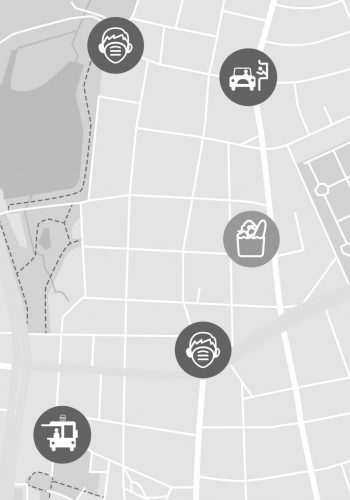Brand moments prevail in metropolitan areas despite pandemic.

Bright spots are emerging for the Original Glazed® doughnut—Krispy Kreme—even as the long-term implications of the pandemic on many urban-located foodservice operations remain to be seen. Big Red Rooster, a JLL company and one of the design experts behind the brand’s recent NYC shops, shares how the doughnut brand is capturing emotional excitement in small urban formats.
Krispy Kreme had its taste buds set on additional locations in NYC for a while, which until recently was only home to one shop in Penn Station, also seeking an upgrade. But in a city known for expensive and exclusive real estate, many challenges surrounded the fresh take the brand needed for the rollout. Engaging with multidimensional brand experience firm, Big Red Rooster, the firm helped the beloved doughnut brand translate the iconic design and sense of “doughnut theater” present in its larger shops into its latest locations.
“The typical Krispy Kreme prototype covers about 3,500 square feet in suburban locations, boasting plenty of room for its notable brand experiences. Urban formats are faced with the added challenge of translating these experiences in a quarter of that size,” said Josh Broehl, Senior Vice President, Big Red Rooster. “From display creation to product positioning, every design element must be meticulously considered to capture the attention of urban commuters.”
The firm worked with Krispy Kreme to hyper-localize the customer experience in new NYC small format shops, using architectural materials and finishes of surrounding, historic neighborhoods in the strategy. The new Harlem location for example was opened inside a historic building that served as a famous saloon and jazz club in the 1950s. Big Red Rooster design strategists brought a full sensorial experience to life by building out the entire storefront around Krispy Kreme’s iconic bowtie, in conjunction with the iconic Hot Light™ to signal when fresh doughnuts are baking.
“In our most recent consumer survey, 74 percent of consumers told us they plan to purchase from a local business whenever possible, caused in part by the pandemic,” said Broehl. “By digging deep into target consumer behaviors, legacy brands can remain a staple in their community too.”
Despite overall losses in the restaurant industry this year, the quick-service space is performing better than its counterparts according to Technomic, down only 6 percent compared to the fast-casual sector (down 12 percent) and full-service restaurants (down 37 percent), signaling the changes that could be forthcoming in foodservice post pandemic.
“As consumers continue to adjust their behaviors during the pandemic, the success of Krispy Kreme’s NYC portfolio expansion creates a positive outlook for foodservice,” said Broehl. “Our survey also found that 50 percent of consumers reported trying to get in and out of store locations as quickly as possible on their last shopping trip—meaning the combination of a recognized, trusted brand in a small format could be well poised for recovery.”
Krispy Kreme now has several operating locations in NYC, with more on the way.
Photos copyright: STEPH GRANT STUDIOS


